Integrated Mathematical Oncology Major Students
Below are the Integrated Mathematical Oncology students who are a part of the larger integrated PhD Program.
 Agata
Agata
In the Anderson lab, we use mathematical modeling to optimize evolutionary therapies for cancer treatment. My research focuses on ovarian cancer and aims to understand how transitory, non-genetic changes, such as cell cycle dynamics and phenotypic plasticity, shape tumor evolution in the context of therapeutic response. Drawing on my background in wet lab work and phenotypic assays, I develop models that incorporate these dynamic cell states to ultimately understand and improve current therapeutic strategies.
Major Professor: Alexander Anderson, PhD
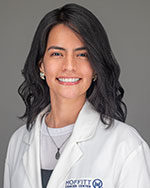 Ana
Ana
In the Rejniak lab, we use mathematical modeling and computational simulations to investigate the biomechanics of normal vs. tumor-like tissue morphogenesis, micro fluids in drug delivery, and biophysics of tumor microenvironment. In particular, I am interested in studying how the properties of the tumor microenvironment influence cancer cells’ decision-making. Specifically, my research focuses on the role of some immune cells, fibroblasts, metabolic conditions, and physicochemical properties of tumor stroma in promoting micro invasions in ductal carcinoma in situ (DCIS).
Major Professor: Katarzyna Rejniak, PhD
 Andree
Andree
Major Professor: Rotating
 Ari
Ari
Ari completed his undergraduate education at St. Petersburg College, majoring in molecular biology with additional certificates in software/web development. He then went on to complete graduate coursework in mathematics and modeling/simulation at the University of Central Florida before beginning studies at Moffitt in the EDIT lab. His work in the lab primarily focuses on exploring responses to radiation through computational techniques to better understand outcomes in patients. This is achieved through exploring the effect of variation through multiple scales.
Major Professor: Jeffrey West, PhD
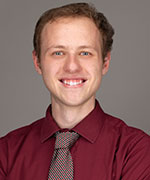
Cameron
I am fascinated by the way that cancer alters the body’s systems, changing the state of the liver, muscles and other tissues. Under healthy conditions, the human body is an immense act of teamwork, with trillions of cells coordinating with one another across vast distances, but cancer – like other chronic diseases, including tuberculosis and HIV – strains this cooperation to its breaking point. The result: chronic inflammation, poor immune activity and wasting of muscle and fat tissues. This latter symptom, known as cachexia, is the focus of my present research, and – by using what has been discovered experimentally – I am mathematically modeling it to better understand its causes. By comprehending the basic biology of cachexia, we may find treatments to alleviate its horrific consequences and the associated suffering, even as we seek strategies to make patients cancer-free.
Major Professor: Joel Brown, PhD
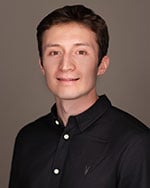 Cole
Cole
Major Professor: Rotating
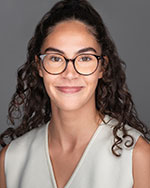
Emilie
In the Rejniak lab, our research uses mathematical modeling to study tumor initiation, progression and treatment, test various scenarios of tumor growth, as well as different protocols of therapies. My research focuses on developing mathematical models of Chimeric Antigen Receptor-T (CAR-T) cells therapy for solid tumors. By using agent-based and continuous models, I aim to enhance their efficacy in the tumor microenvironment.
Major Professor: Katarzyna Rejniak, PhD
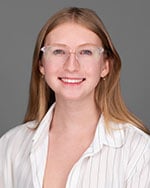 Julia
Julia
Major Professor: Rotating
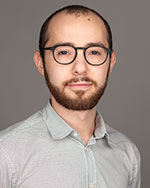
Kevin Robert
The Anderson Lab is increasingly oriented towards developing clinical decision support tools that are based on data analysis and mathematical modeling. Within the interdisciplinary setting of the Integrated Mathematical Oncology Department, I am interested in exploring translatable prediction methods that could drive novel multi-agent combination therapies in non-small cell lung cancer. Such methods use mathematical models, capturing longitudinal dynamics of ecological processes, in combination with state-of-the-art imaging and computational methods.
Major Professor: Alexander Anderson, PhD
 Matthew
Matthew
My research interests lie at the intersection of ecology, evolution, and cancer. I utilize Hybrid Agent-Based Models (ABMs) and machine learning techniques to investigate how adaptive therapy can enhance treatment strategies for acute myeloid leukemia (AML) and multiple myeloma (MM). By bridging the fields of ecology, evolution, and translational cancer research, my work aims to shed light on the evolutionary dynamics of cancer cells and their interactions within the tumor microenvironment, ultimately contributing to more effective therapies.
Major Professor: David Basanta, PhD
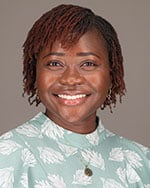 Phebe
Phebe
In the Brady-Nicholls lab, we are focused on improving patient care using accessible, minimally invasive biomarkers through the integration of mathematical modeling with the goal of understanding and fundamentally reducing disparities and improving patient-reported outcomes. Being broadly interested in the intersection of mathematics, oncology, and epidemiology, my research is currently focused on how circulating tumor DNA (ctDNA) can be utilized for treatment adaptation in patients with HPV+ Oropharyngeal Squamous Cell Carcinoma (OPSCC). To do this, I seek to develop patient-specific mathematical models based on tumor volume and frequently collected ctDNA as well as other patient-reported parameters using differential equation-based approaches and data-fitting techniques to understand patient progression and survival, leading to potential dose adaptation and de-escalation.
Major Professor: Renee Brady-Nicholls, PhD
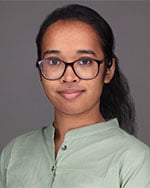 Ranjini
Ranjini
Cancer is driven by natural selection at a cellular level. Phenotypic heterogeneity within the tumor microenvironment enables the emergence of drug resistance and relapse. Understanding the genetic and developmental cues that lead to phenotypic variation is key to understanding cancer evolution. Under Dr. Joel Brown, I hope to understand cancer evolution through a mathematical lens and develop therapeutic regimens that can tackle this problem.
Major Professor: Joel Brown, PhD
Integrated Mathematical Oncology PhD
